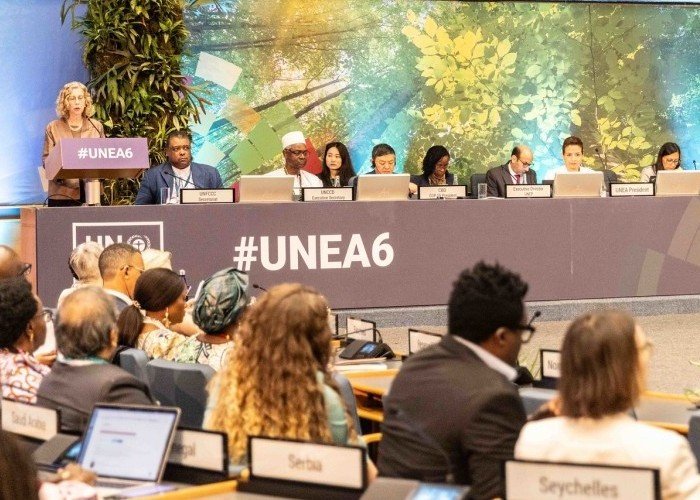Climate intervention: an option for Global South to reduce near-term climate risk?
As published in World Economic Forum.
Climate intervention, sometimes referred to as geo-engineering, could provide a serious solution to reduce near-term climate risk.
There seems to be a greater lack of awareness, contribution and expertise in the Global South about the potential and risks involved in climate intervention.
To ensure climate intervention potential is fully realized, we need a more structural political process that aims to address inequality and exclusion.
With nearly 36.3 billion tonnes of CO2 estimated to have been released into the atmosphere in 2021 alone, it came as no surprise the Intergovernmental Panel on Climate Change’s latest synthesis report on climate science projected that the earth’s surface temperature will increase over the current century under all assessed emission scenarios.
The consequences are dire: there will be repeated and long-lasting occurrences of heatwaves, and extreme precipitation events will become more intense and frequent in many regions of the world.
Ocean surface temperatures will also continue to warm and ocean waters will acidify. Following the adoption of the Paris Agreement in 2015, global leaders – both in the public and private sectors – have been on a journey to limit global warming to a maximum rise of 1.5 degrees Celsius. The UNFCCC Conference of Parties has also seen an increase in commitments from governments and the private sector to reach net zero over the next few decades. However, data shows that greenhouse gas emissions (GHG) continue to rise!
As emissions continue to climb, so does climate anxiety. Scientists, researchers and environmental activists around the world have been campaigning for the need to drastically end fossil fuel dependency to back up the reduction in GHG emissions. These campaigns have been often geared towards mainstream solutions, including large-scale afforestation and alternative sources of energy such as solar panels, wind turbines and biomass. But with UN scientific assessments now projecting warming to continue in all emission scenarios, there's a welcoming perspective for developing technologies that have the potential to significantly expedite carbon capture or cool the climate directly, thus the term: “climate intervention”.
Climate interventionism – an opportunity to model Global South’s future
To this end, climate intervention, sometimes referred to as geo-engineering, is being talked about as a solution to reduce near-term climate risk (current decades of disruptive climatic impacts). While many hazards may now be inevitable, for communities living in already vulnerable conditions these interventions as suggested will help traverse the breakthroughs needed in the regions of Africa and Asia where there’s rising concerns of food security and migration, and displacement of people.
It goes without saying, however, that in the Global South only a handful of stakeholders in the climate change field are fully aware of such interventions. There seems to be a greater lack of awareness, contribution and expertise among the general Global South populace, with no clarity over whether climate interventionism will be acknowledged within popular culture and politics. However, climate intervention offers an opportunity to model our future: either one that closes the current emission imbalance to revolutionize our ability to address climate change, or one that exacerbates global inequality.
SRM is a climate intervention that continues to gain traction
Solar Radiation Management (SRM), the approach being considered most effective for reducing warming quickly, is one of the interventions that continues to gain traction. It has immense potential to mitigate the impacts of climate change by increasing the amount of sunlight reflected by clouds and particles in the atmosphere or from the Earth's surface.
This could be done through Marine Cloud Brightening (MCB), Stratospheric Aerosol Injection (SAI), and Surface Albedo Modification (SAM), amongst others. Modeled projections show that these approaches could have significant benefits such as weakening storms, cutting drought, limiting wildfires and lessening coral bleaching.
In December, Typhoon Rai in the Philippines left 457 people dead and over $1 billion of property destroyed. SAI, for instance, could have helped disrupt particles like sulphur dioxide in the atmosphere into one specific layer of the atmosphere, that is the stratosphere. This could then make the particles act as a reflective filter, throwing a percentage of solar radiation back into space and thereby prevent it from heating up the atmosphere, instead artificially cooling down the climate. This has the potential to alter the weather system, mitigating the risks that we were exposed to during Typhoon Rai.
The looming challenge, however, is that if these potential technologies are not inclusively explored and exclude the most vulnerable people in the discourse, we would have losers and winners, given there is not only a lack of capacity in the Global North, but also the low likelihood this modification would be uniformly applied, creating more risk to already vulnerable people.
While it is important that the Global South invests in researching these transformative technological manipulations of our climate given the immerse advantages presented, in order to ensure the opportunities presented are fully optimized, we need a more structural political process that aims to address the broader systemic issues of inequalities and exclusion, so solutions that are designed to address climate change can truly be for the benefit of all people and the planet.
Joshua Amponsem is a Ghanaian climate activist and Co-Director of the new Youth Climate Justice Fund. He is the former Climate Lead at the Office of the UN Secretary General’s Envoy on Youth. and the Founder of Green Africa Youth Organization. He has almost a decade of experience of working with young people on Climate Action, Disaster Risk, and Resilience Building.




